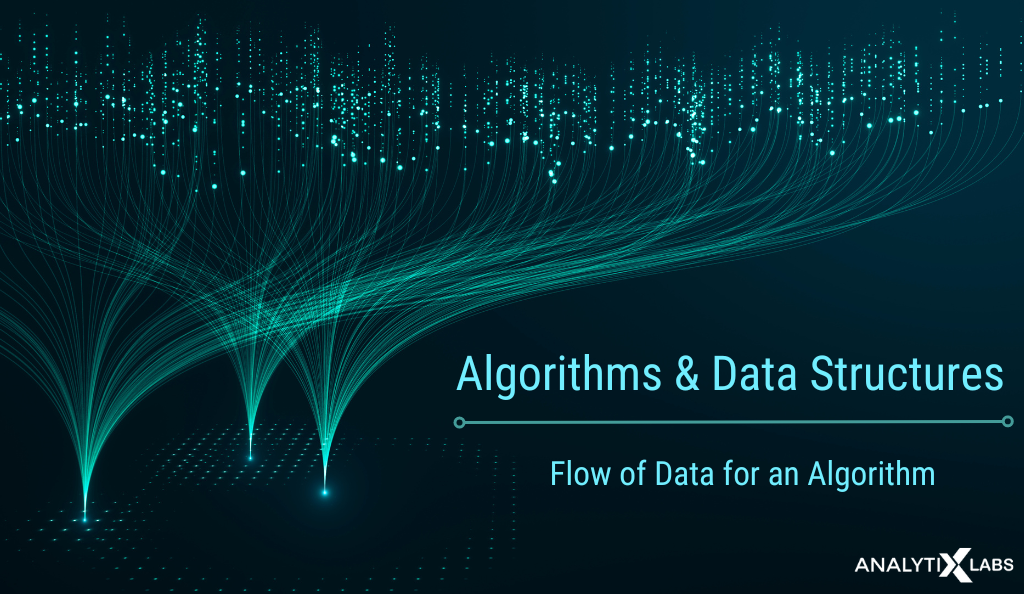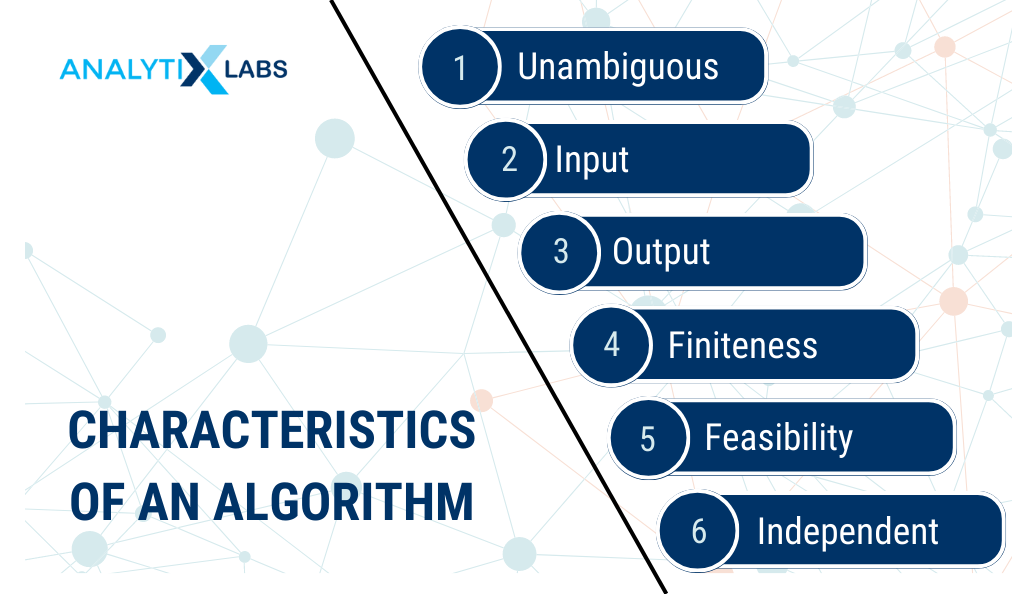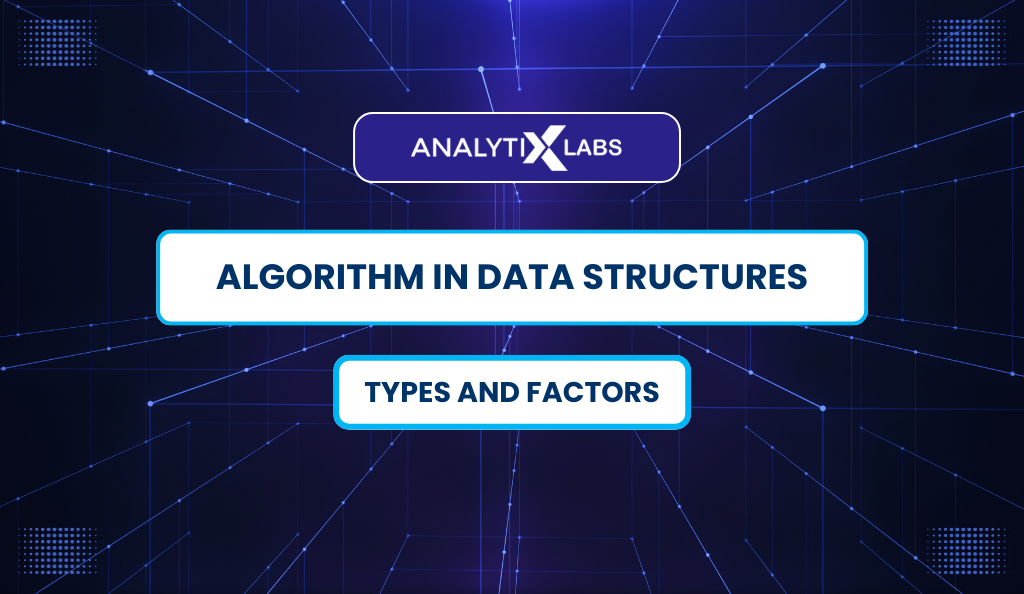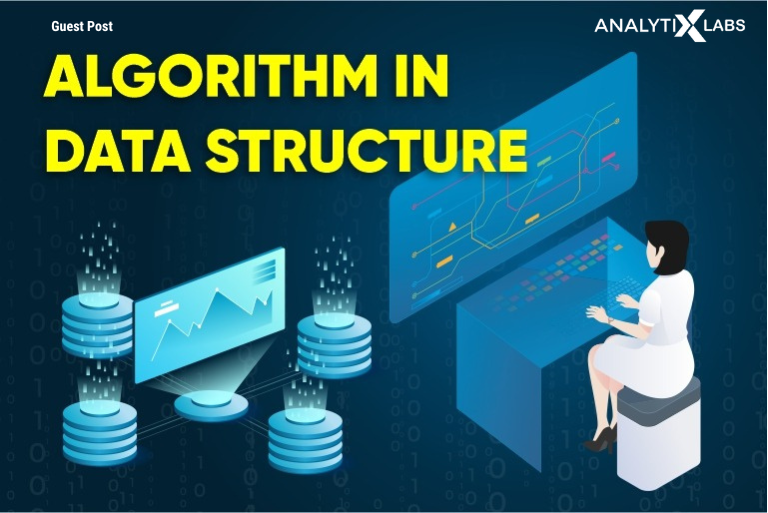Algorithms and data structures work together to let programmers create any software they can imagine. The only way to guarantee well-optimized and efficient code is to deeply understand algorithm in data structure.
This article will introduce the idea of algorithms in the data structure, discuss their significance in computer science, and present a working example of an algorithm.
Also read: Understanding Data Structures: Types and Applications
What is Algorithm in Data Structure ?
Programming languages rely heavily on data structures and algorithms (DSA), whose treatment varies widely among languages. This is primarily why algorithm in data structure plays a pivotal role in everyday programming, regardless of your programming language.
- What is data?
Information is the foundation of any modern business. Everything a company knows about its consumers, from those who have made purchases to those who have just visited its website, is data. Businesses can benefit from making more informed choices when this information is processed and manipulated properly.
- What is an algorithm?
An algorithm is a collection of instructions for generating a desired result from data provided by a user or computer.
Say, for argument’s sake, you have a disorganized list of students and their individual kilogram weights.
Converting the kilograms to pounds and sorting the list by weight is required. In this case, data structures will be used to arrange the list properly, and an algorithm will be used to convert the weights from kilograms to pounds and display the output on the screen.
Also read: Data Science vs. Computer Science: Similarities, Differences, and Role of Data in Computer Science
How to solve real problems with algorithms?
You need to create a program or set of instructions to solve a real-world problem, which may be considered an instance of a real-world problem. Instructions are what we call an algorithm.
A problem-solving algorithm is a predetermined series of actions that may be carried out in a logical order. After an algorithm has been designed, it is fed the inputs needed to complete the task. The unit will process the input, generating the desired output. The output is the final result or consequence of the program.
One way to manage information in a computerized setting is by using a data structure. Well-defined data structures include things like tables of data and numerical sequences. A computer algorithm is a set of instructions for processing data to get a desired result.
Do algorithms and data structures complement one another?

Numerous algorithms exist, each with its own unique function. They interact with various data structures in the same range of computational complexity.
Consider algorithms as moving parts under the surface that affect pre-existing data structures.
The expression of information in code is adaptable. You can generalize across languages once you know how algorithms are constructed.
It’s like understanding the syntax of a similar language family. Once you get a feel for the organizational principles and basic rules that govern each programming language, you’ll find that switching between them is a breeze.
The flow of Data for an Algorithm
- Problem: A problem is anything that requires the development of a program or a set of instructions, whether it be a real-world issue or just one of its examples. The group of guidelines is referred to as an algorithm.
- Algorithm: An algorithm will be created for an issue requiring a step-by-step process.
- Input: After creating an algorithm, the algorithm is given the necessary and desired inputs.
- Processing unit: The processing unit will be supplied with the input and will then generate the desired output.
- Output: The output of a program is its outcome or result.
Characteristics of an Algorithm
Not all techniques may be known as an algorithm. A set of rules ought to have the subsequent characteristics:

- Unambiguous − The algorithm must be completely transparent. There should be no ambiguity or room for interpretation in any of its processes (or phases) or inputs/outputs.
- Input − Inputs to a set of rules must be well-described, or the set of rules will fail.
- Output − The results of an algorithm should be exactly what is expected of it.
- Finiteness − A finite number of steps is required for an algorithm to reach its end state.
- Feasibility − Probably doable with the tools at hand.
- Independent − The instructions for an algorithm should be written out in detail, separate from any actual code.
From the facts shape factor of view, the subsequent are a few vital classes of algorithms,
- Search − Algorithm to look at an object in a records structure.
- Sort − Algorithm to type gadgets in a positive order.
- Insert − Algorithm to insert the object in the structure of a fact.
- Update − Algorithm to replace a current object in a statistics structure.
- Delete − Algorithm to delete a current object from a statistics structure.
Algorithm in Data Structure: Business Applications
While many businesses look for employees with experience in Machine Learning, others, like Amazon, take a different tack. They prioritize those that have a deep understanding of data structures and algorithms.
Below is a list that illustrates the various fields in which data structure and algorithm knowledge might be useful to a future data scientist or software developer.
A career in Data science is the right choice for freshers because It is ruling the Internet and is on the top list of trending technologies.
Also read: How to Become a Data Scientist?
Computer Science and Programming
There are several ways in which algorithms underpin computer science and programming. They offer a structured method for addressing issues, which aids in creating optimal code. Software systems’ performance, execution time, and resource utilization may all be enhanced by careful optimization and analysis of algorithms in data structure.
Algorithms can simplify complicated processes and make them easier to explain and share. Providing a shared language lets developers work together, learn from one another, and improve upon current solutions. The ability to think logically and analytically in the context of computer science is essential, and algorithmic thinking is its foundation.
Why are Algorithms Necessary?

It aids in our comprehension of scalability. To easily examine a large real-world problem, it must be broken down into smaller and smaller chunks.
The real world needs to lend itself better to step-by-step analysis of algorithms in data structure. The task is practicable if it can be decomposed into manageable chunks.
Types of Algorithms
The framework and operation of algorithms allow for several categories. Let’s explore three fundamental types of algorithms:
- Sequential Algorithm: The stages in a sequential algorithm are carried out in order, one after the other. It’s a no-nonsense method for fixing issues by taking steps in a certain sequence.
- Conditional Algorithm: A conditional algorithm bases its choices on predetermined criteria. Control structures like if-else statements and switch-case statements are used to determine the best action to take depending on the data provided or the condition of the process thus far.
- Iterative Algorithm: An iterative algorithm will keep running the same steps until the goal is achieved. It uses loops like loops and while loops to conduct operations repeatedly until the desired result is reached.
Factors of an Algorithm
The following elements must be taken into account while creating an algorithm:
- Modularity: If a problem is presented and it can be divided into small-small modules or small-small stages, as is the definition of an algorithm in its simplest form, it indicates that this characteristic has been correctly developed for the algorithm.
- Correctness: An algorithm is said to be accurate when the provided inputs result in the expected output, indicating that the method has been properly developed. A correct algorithm analysis has been performed.
- Maintainability: In this context, maintainability refers to the algorithm’s design in a very basic, organized manner such that when the algorithm is redefined, there are no significant changes made to the algorithm.
- Functionality: To resolve the practical issue, it considers several logical procedures.
- Robustness refers to an algorithm’s ability to characterize our issue precisely.
- User-friendly: The designer can only convey the method to the programmer if it is user-friendly.
- Simplicity: A simple algorithm is straightforward to comprehend.
- Extensibility: Your algorithm should be extendable if another algorithm designer or programmer wishes to utilize it.
Algorithm Writing
Algorithm writing needs to be standardized. However, it requires resources. Algorithms never specify a programming language. As you know, all programming languages use loops like do, for, while, flow control like if-else, and so on. Common constructions can write an algorithm. Step-by-step algorithms are sometimes written. Algorithm writing follows the problem domain definition. You must understand the problem domain before solving it.
Example: Write algorithms using an example. Problem: Write a multiplication algorithm that shows the result.
Step 1: Start
Step 2:Declare three integers
Step 3: Define values of X and Y
Step 4: Multiply values of X and Y
Step 5: Store the result to Z
Step 6: Print Z
Step 7: Stop
Programmers learn to code from algorithms .
The algorithm is also written as:
Step 1: Start mul
Step 2: Get values of X and Y
Step 3: X*Y = Z
Step 4: Display Z
Step 5: Stop
The second approach is more common in the fields of algorithm analysis and design. This facilitates algorithm analysis with the ability to disregard any unnecessary definitions conveniently.
They can monitor the process and observe which procedures are being performed. Step numbers are not required to be written down. An algorithm is developed to address a certain issue. There is often more than one answer to a problem.
Algorithms solve complicated issues in computer science and programming. They improve software performance, structure problem-solving, and encourage programmer cooperation.
| Let us now understand the complexity of algorithms and space factor |
Complexity of Algorithms
Assuming X is an algorithm and n is the amount of the input data, the efficiency of X is primarily determined by how much time and space the algorithm X uses.
- Time Factor: The number of crucial operations, such as comparisons in the sorting algorithm, is used to calculate time.
- Space Factor: The quantity of area is calculated by collectively including how many reminiscences the technique can use.
Complexity of Space
An algorithm’s space complexity measures how much memory it uses over its existence.
An algorithm’s space requirement is equal to the sum of the next two factors:
- A fixed component is the area needed to hold certain data and variables, regardless of the problem’s size. Using basic variables and constants, the size of the program, etc.
- A variable portion is the area used by variables whose size is determined by the problem’s size. For instance, dynamic memory allocation, stack space for recursions, etc.
Space difficulty, S(P), is defined as
S(P) = C + SP(I)
where C denotes the algorithm’s fixed portion and S(I) denotes its variable portion, which is determined by the instance characteristic.
Algorithm-Based Methods
The following methods are employed after weighing the algorithm design’s theoretical and practical implications.
Brute Force Algorithm
The brute-force method employs a broad logical framework to create a solution. It’s another name for an algorithm that looks at every potential outcome before settling on the best one to solve the problem. In this regard, there are two distinct categories of algorithms:
- Optimizing: Optimization is sifting through all possible answers to a problem, selecting the optimal one, and stopping the search after that optimal answer has been identified.
- Giving up: It’ll end when the optimal course of action is determined.
Divide and conquer
Strategies based on splintering the opposition. The algorithm was implemented well. It enables you to create iterative variants of algorithms. It dissects the algorithm to arrive at many solutions to the problem. Valid output is generated given valid input, and the problem can be decomposed in several ways. This well-formed result is sent on to the next function.
Greedy
The greedy algorithm is a paradigm for optimizing algorithms that aim to find the best possible answer with each iteration. It can be implemented quickly and efficiently.
However, the situations in which it offers the best option are quite unusual.
Stochastic simulation
Saving the algorithm’s progress improves its performance. To arrive at the best answer, it uses a five-pronged approach:
- To locate the best answer, it divides the issue into subproblems.
- It then determines which subproblems have the best solution once the problem has been decomposed.
- Remembers the answers to individual parts of an issue.
- Avoid having to recalculate the answer for similar subproblems by reusing the solution.
- The sophisticated program’s output is finally calculated.
Branch & Bound Algorithm
Regarding programming challenges, the branch and bound approach can only be used for integer programming. Using this method, we can break down the total space of possible answers into more manageable chunks.
The optimal option is then determined by further evaluating these subgroups.
- Randomized Algorithm: As we have seen with conventional algorithms, a randomized algorithm also has input and output parameters.Deterministic algorithms are those that can be specified in detail, including the inputs they take, the outputs they produce, and the processes they take to get those results. What happens when a random variable is added to a randomized algorithm?The output of a randomized algorithm is also random since it introduces some random bits and adds them to the input. Compared to the deterministic algorithm, random algorithms are easier to implement and more effective.
- Backtracking: Recursively solving a problem and discarding the answer if it doesn’t meet the issue’s constraints is called backtracking, an algorithmic approach.
Here are some examples of the most common kinds of algorithms:
- Sort refers to an algorithm designed to arrange data into a certain hierarchy.
- Search: It is an algorithm designed to comb through the data in a database.
- Delete: An algorithm for removing an existing data item from a collection.
- Insert: It is an Algorithm for Adding Data to an Existing Structure.
- Update: It refers to an algorithm that modifies pre-existing data in a structure.
Algorithms for Sorting
Using sorting algorithms, arrays, and other data structures can rearrange their components into a desired order. The comparison operator determines the new order of the components.
Why use a Sorting Algorithm?
- The performance of a binary search method can be improved by first sorting the input array into ascending order using a fast and accurate sorting algorithm.
- It generates data in a structured, easily digestible way.
- Finding what you need in a sorted list is much quicker than in an unsorted one.
Conclusion :
Computers are only able to successfully complete difficult tasks thanks to the existence of algorithms, which are essential to their operation.
They are utilized to carry out various tasks in a methodical and automated way, including processing data, making choices, and carrying out numerous activities.
Problems may be addressed predictably when well-defined algorithms are used, and solutions can be duplicated and improved upon in the future when these algorithms are used.
| Author Bio:
Disha is a professional content writer with 3+ years of experience in the Edtech domain. With a background in technical education, like Itpreneur, Disha has been an avid reader from a young age. She is super fond of reading non-fiction and academic books and articles. Her quality lies in explaining complex topics in simplified language with a tint of creative examples and storytelling. |








